The game is played on a board which is the shape of a regular hexagon made up of hexagons with 6 cells to a side. Because three cells meet in a point three colours are required to colour the board and so each side needs three bishops instead of two.
The initial setup of the pieces is like this:
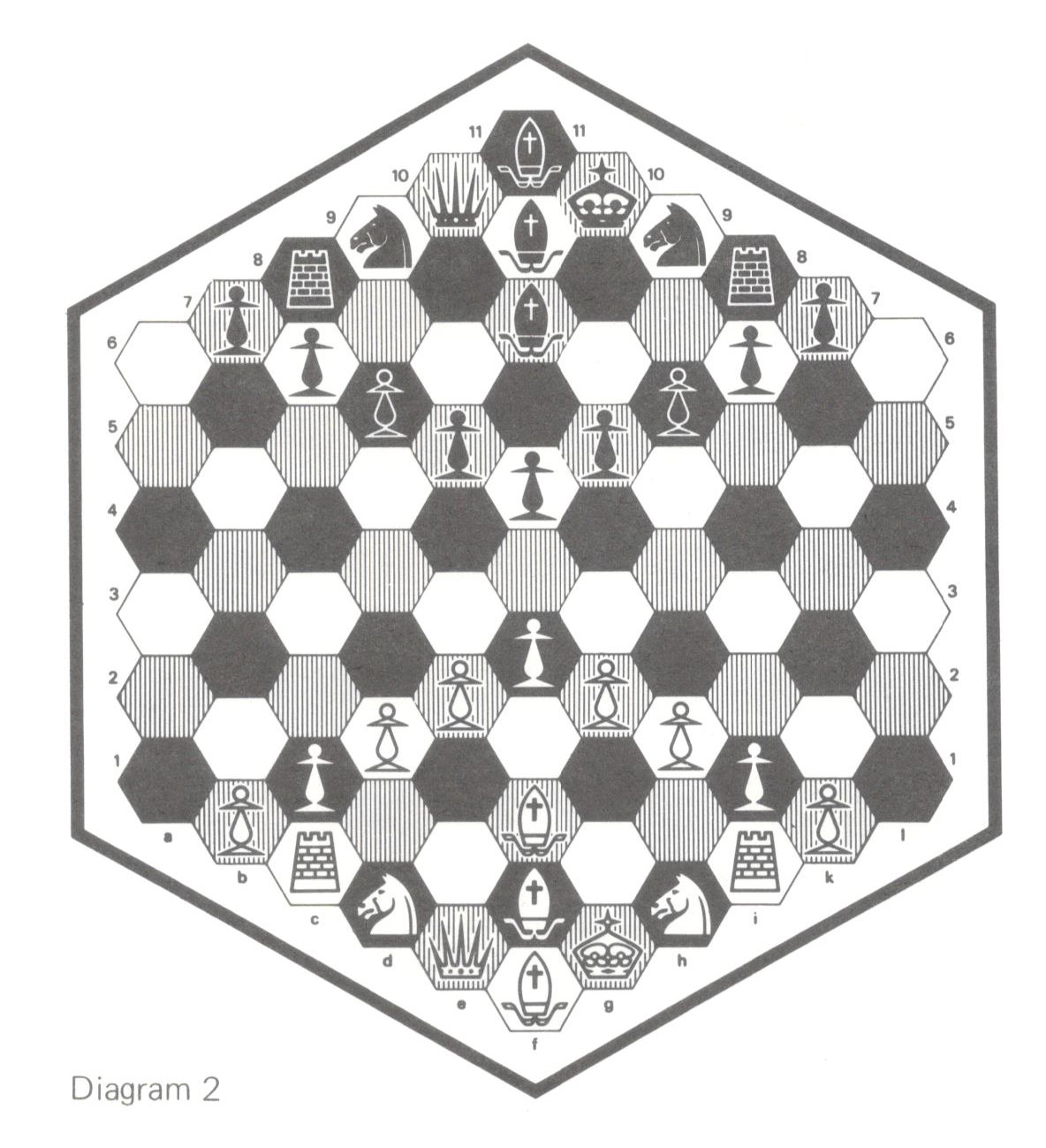
As you can see there are 11 files assigned letters "a" through "l" excluding the letter "j". The files are not all the same length. Files "a" and "l" are only 6 cells long while file "f" is 11 cells long.
The way the pieces move is intuitively obvious to most square-players.
The bishops move along the "diagonals" like so:
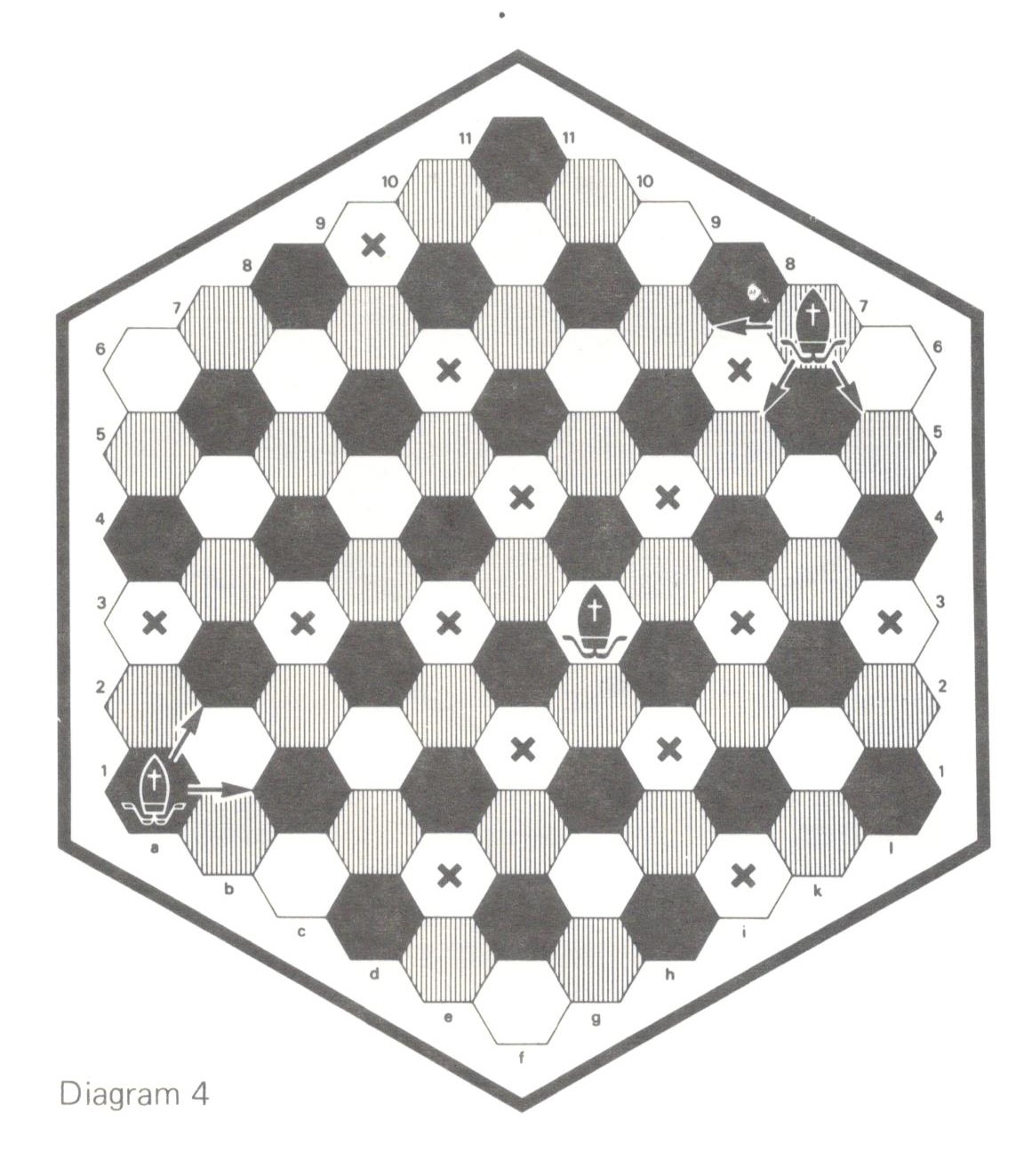
Rooks move along the ranks and files like so:
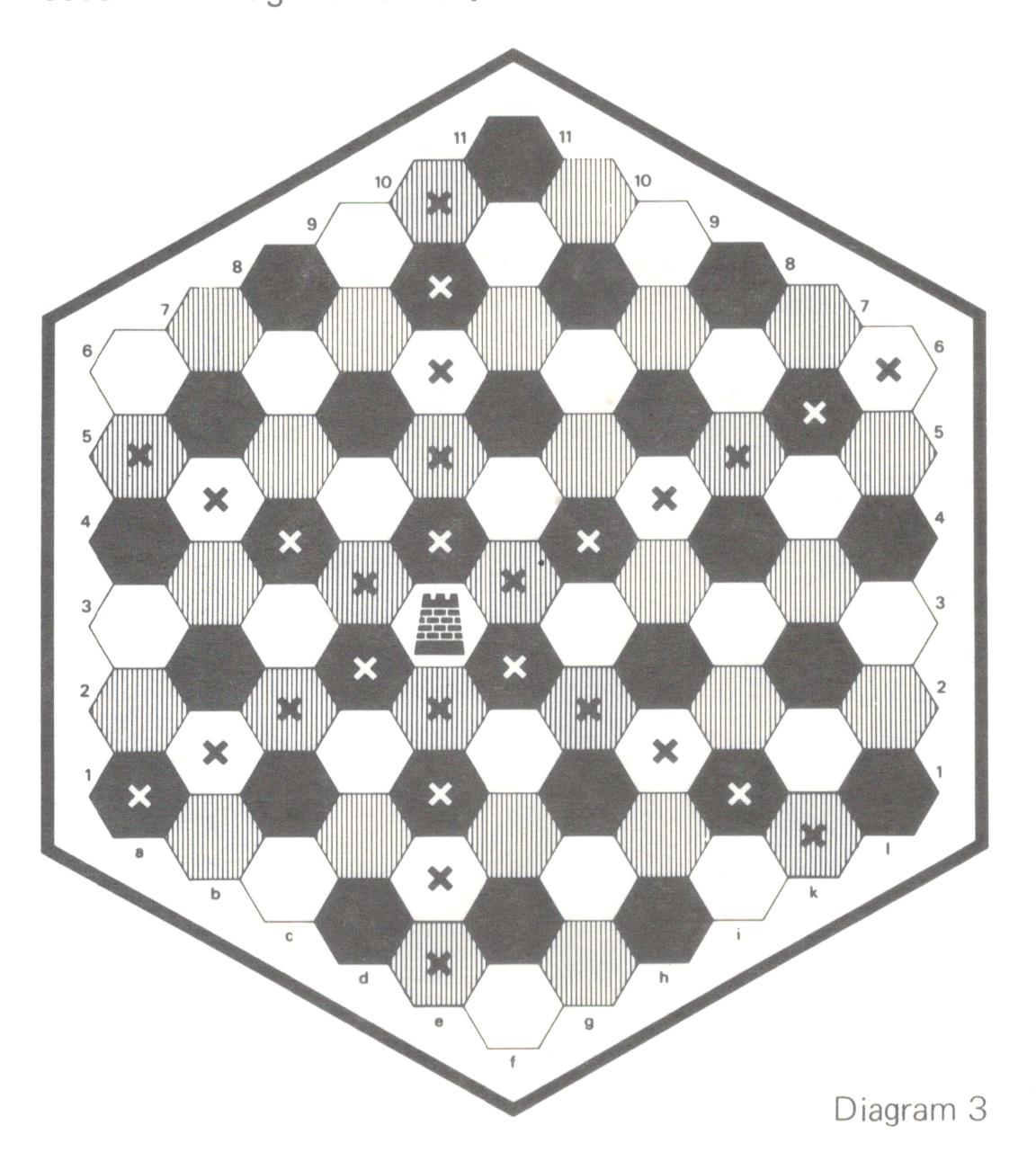
And the queen combines rook and bishop moves like so:
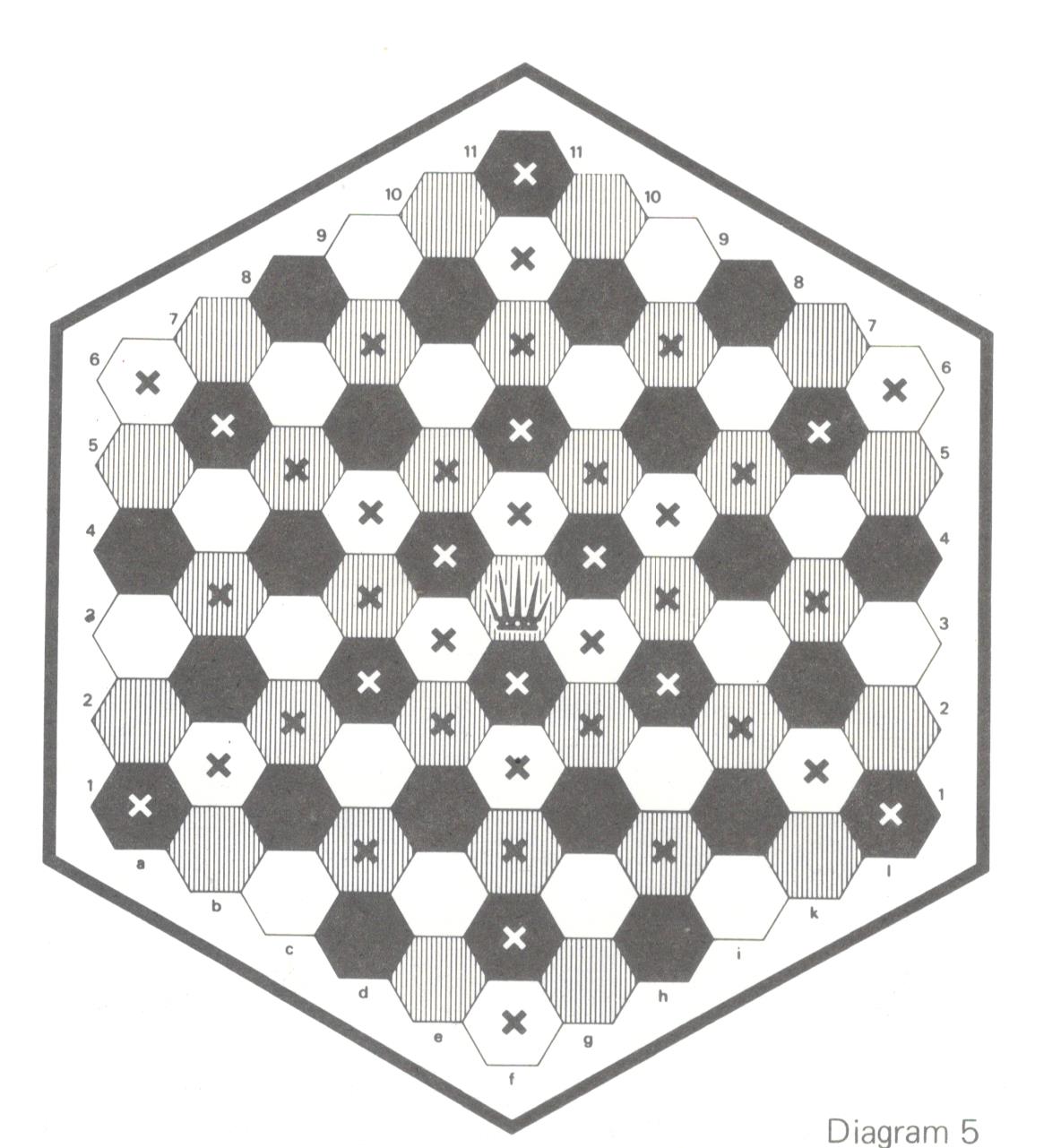
The king moves like the queen only one cell at a time and the knight moves to the closest cells the queen can't go to:
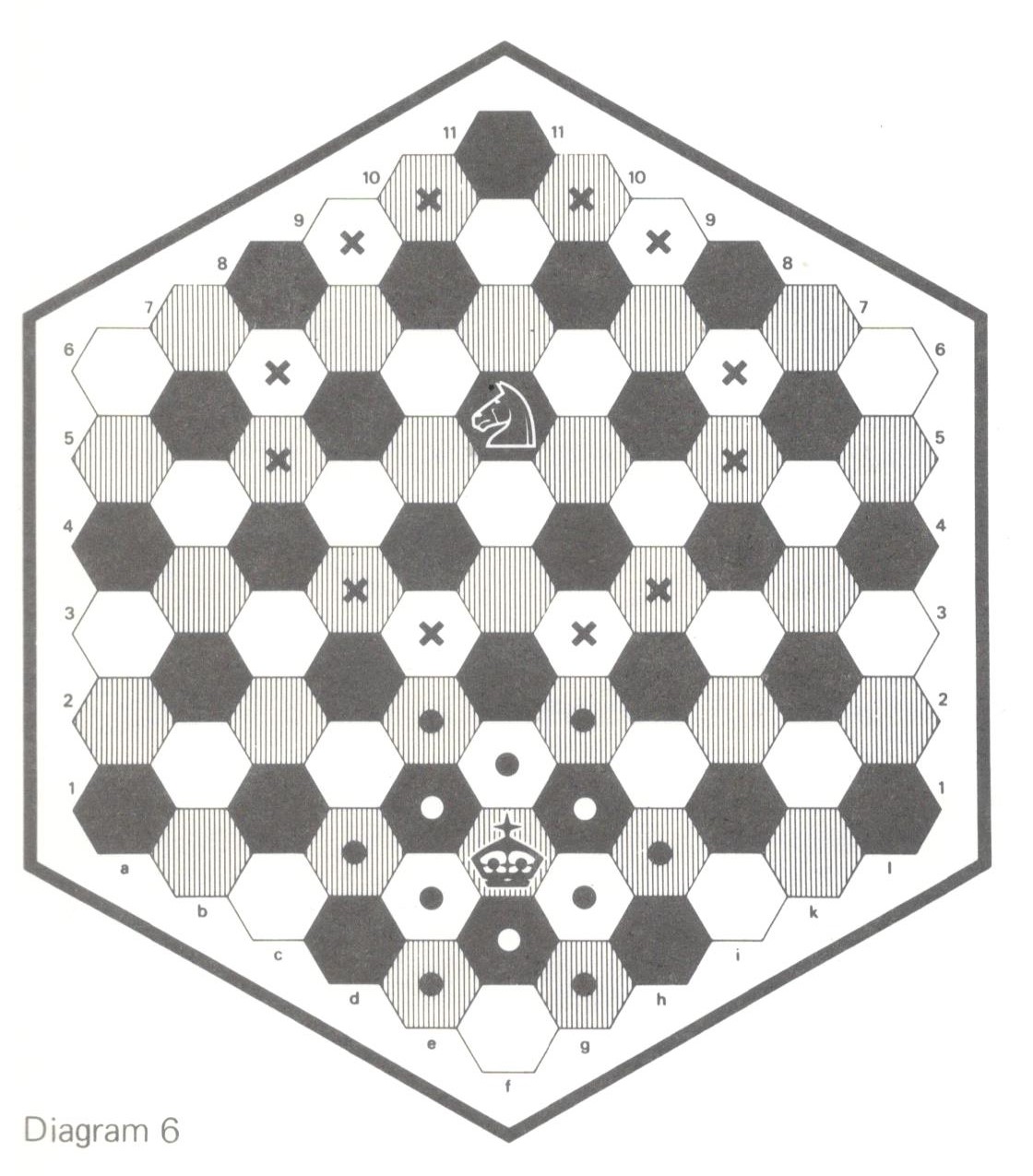
Pawns move forwards like rooks on files but rather than capture like bishops they capture like rooks on ranks. They can move two cells on the first move forward and if their first move is an "inward" capture that leaves them on the starting cell for another same coloured pawn then they retain the right to move two cells on the next move forward. This removes the need to remember where a pawn started life. An "outward" capture removes this right.
As in the "square" variant when a pawn reaches the furthermost cell on a file then it "promotes" to a piece. Similarly en passant works in the same way. If a pawn moves two cells forward skipping over a cell where it could have been taken by an enemy pawn then the enemy pawn may on the next move only capture the pawn en passant as if it had only moved one cell.
Here is a pawn summary:
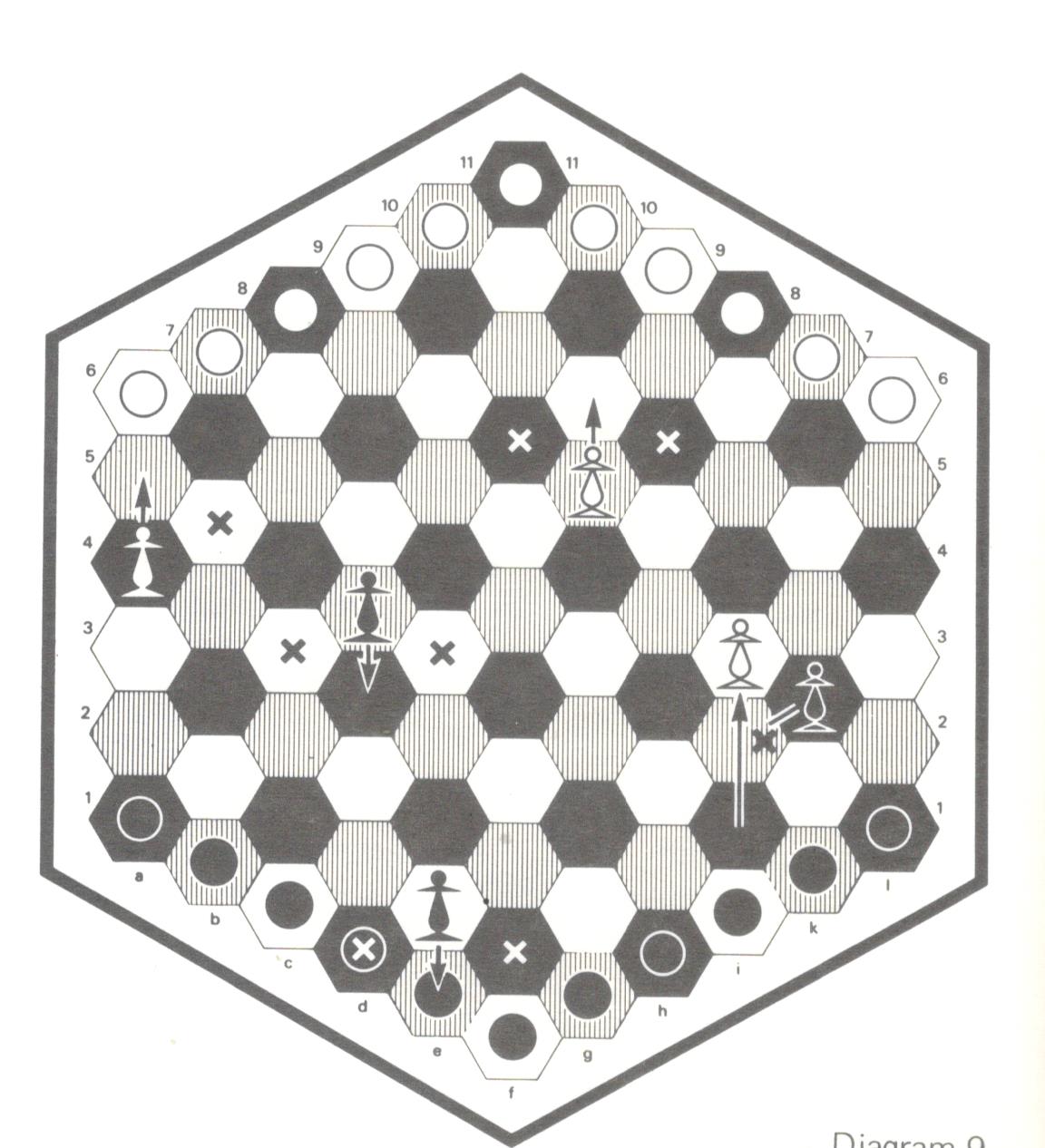
The king is highly mobile and in any case there is no real hiding place so there is no castling.
Stalemate is not a draw. Instead the player delivering stalemate receives 0.75 points and the stalemated receives 0.25.
Otherwise games can be drawn in the usual ways:
- agreement
- 3 fold repetition
- 50 moves with no pawn moves or captures
- insufficient material
Because of the richer move possibilities and the pawn differences it is very difficult to get blocked positions where there is mating material but the remaining pieces can't get at each other.
Other interesting differences from the square variant are:
- all the pieces can triangulate. That is a piece can be protecting another piece and move in a different direction and still be protecting the same piece.
- knights are worth a bit more than bishops. Two knights can mate with the king's help but three bishops are needed






